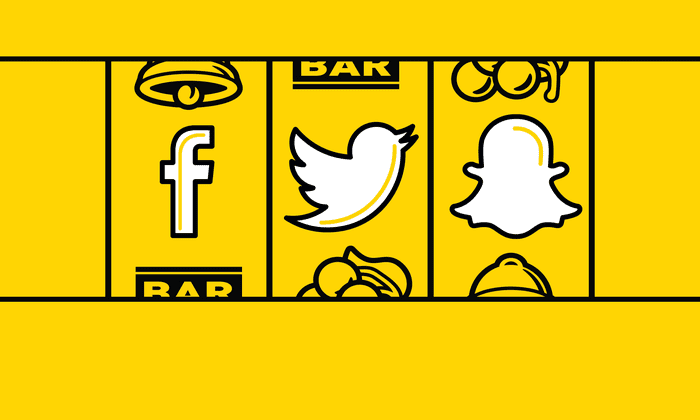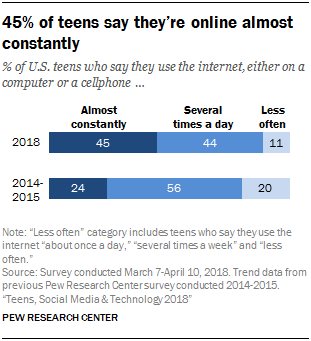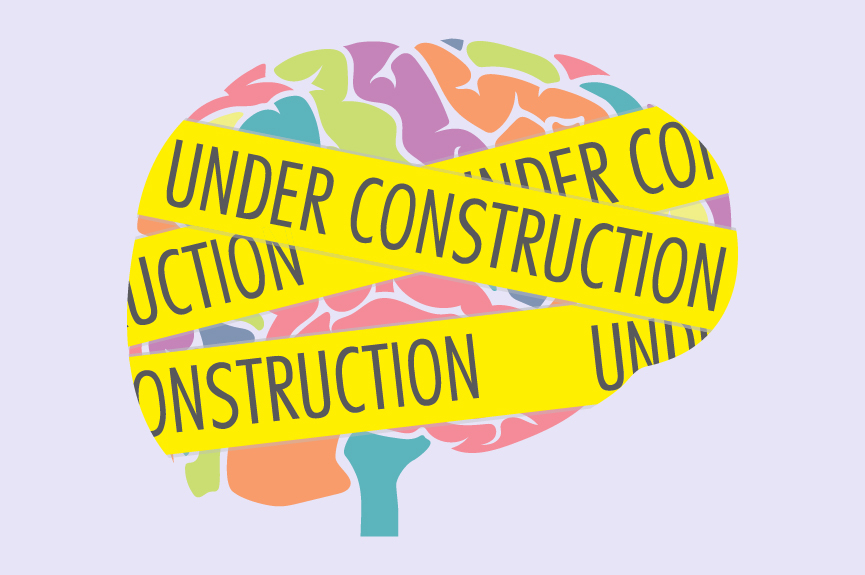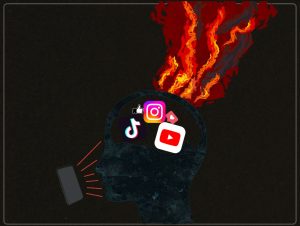“Facebook Knows Instagram Is Toxic for Teen Girls”
This is what the caption reads of an article in the Wall Street Journal which shocked the world in September of last year. In the article, internal research by Facebook (the parent company of Instagram) reveals that their social media app makes body image issues worse for one in three teen girls, and degrades their mental well-being. Later it becomes clear the documents were leaked by ex-Facebook product manager Frances Haugen, who was concerned because no steps were being taken by the company to tackle these issues. In this instance Instagram proved to be causing problems for children and young-adults, but other social media platforms are not any less guilty. The problem lies in the fundamental way content is being offered to users, fueled by artificial intelligence. Children especially are prone to be victims of the negative effects of social media, and more education on social media mindfulness to both parents and children is needed to protect them.
Social media: from tool to money-making machine
“It takes discipline not to let social media steal your time.”
Alexis Ohanian
We are not wired for hyperconnectedness
Interhuman connection, relation and communication are essential to human life. This was surely true for our ancestors, for which not belonging to a tribe meant to die. Up until around 200 years ago – for 99.9% of Homo sapiens existence – the only means of communication humans had was face-to-face verbal communication. But since the Industrial Revolution, new forms of personal communication have been developing rapidly. From sending letters, we went to calling on landline telephones, to calling on mobile phones, to texting around the turn of the century.
Then, from 2005, the rise of social media changed our way of connecting fundamentally. Right now, 58% of the world population, and even 93% of the world population with an internet connection are using social media. We are hypothetically able to contact anyone we know around the world in a matter of seconds or minutes, making everyone hyperconnected. This has all been made possible due to innovations in technology and artificial intelligence systems. Most will argue these innovations are positive, as they allow us to connect to one another more. This was exactly what the inventors of these social media platforms envisioned when the platforms launched more than a decade ago. But since then, those social media platforms have changed from a tool for users to a money-making machine for shareholders by exploiting user’s attention. In the example of Instagram above Mark Zuckerberg and Facebook shareholders were earning millions from the excessive engagement of their users, the latter are suffering increasingly from addictive-like behaviors and symptoms. This goes for all social media platforms.
The role of artificial intelligence
With increased computational power and innovation in artificial intelligence the past decade, social media platforms have evolved into attention-sucking machines. In order to maximize profit, the goal is to keep the user on the platform for as long as possible. By tracking user’s behavior across the internet and applying this data to artificial intelligence algorithms, the social media platforms can predict which content the user is most likely to stay engaged with. If you’re thinking this sounds an awful lot like the use of alcohol, tobacco or gambling: you’re right. Due to the way social media is designed right now, social media addiction is becoming a real issue, especially for the younger generation.
Children and young adults are especially vulnerable to the effects of social media, due to their brain not being fully developed yet. The kids using social media are getting younger and younger. Even though the age requirement for most social media is 13 years old, about half of children aged 10 to 12 and 32% of kids aged 7 to 9 are using social media. Because the use of social media among children and teenagers is quite novel, the direct effects have yet to be proven empirically. A lot of research has been done however showing a correlation between social media use among children and young-adults, loneliness, depression, anxiety, and other mental health issues. In this essay we will focus on teenagers aged 13-18, since this group is most subject to the negative effects of social media with often little to no guidance from adults or institutions. Studies and articles considering these issues during the Covid-19 pandemic are left out unless otherwise stated, as this period does not resemble ‘normal life’ and skews results of for instance loneliness and mental health. We will explain the process by which children are getting addicted to social media, and which consequences this has on their development and well-being. Lastly, we will argue that in order to protect our children AI algorithms should be regulated and social media mindfulness should be educated to children.
How technology companies use AI to get our kids hooked
“The attention of others is the most irresistible of drugs.”
Georg Franck, 2019
The attention economy
Nowadays, attention is money. Technology companies such as Meta (previously Facebook) or Google capitalize on the amount of engagement – that is, how much time a user spends on their platforms. The more time users spend browsing videos on YouTube or scrolling through feeds on Instagram, the more opportunities there are to show ads to the users and make money. Naturally, companies are trying to make their products as addictive as possible to maximize the time spent on their platform. Social media companies hire so-called “attention engineers”, who use for example gambling principles to try and make the platforms as addictive as possible. Combining the ever increasing availability of user data and the most recent knowledge on human psychology and behavior, artificial intelligence (AI) algorithms are implemented to create a behavior profile of every user. This profile is then used for the algorithms to decide which content has the highest probability of keeping you engaged on the platform.
Social media is designed to be addictive
In the introduction, we already proposed social media has the same characteristics as tobacco or drugs in that they are prone to be addicting. And research confirms that when users engage with social media, the same brain regions are activated as when you eat, gamble, or use drugs. The part of the brain manipulated by social media is the reward system, driven by the neurotransmitter dopamine. Dopamine is released in response to unexpected rewards. In social media, this happens when you, for example, scroll through your Instagram feed in hopes of finding something entertaining. Every time you do find something, dopamine gets released, and you feel rewarded. Tech companies use AI algorithms to exploit this mechanism and make social media platforms addicting. One study found that a personalized feed of video clips on the social media platform TikTok activated brain regions related to addiction, while a non-personalized feed did not. Our brains are programmed to learn which behavior leads to the dopamine release and subsequently motivates us to do this behavior again. This was extremely effective in ancestral times because it motivated us, for example, to find food and remember how to get it again. But now, this reward system is being exploited by technology companies to keep us scrolling. Just like with food, drugs, or gambling, there is a risk for addiction. When the product is good enough, users may start using it excessively, even if they don’t necessarily want to. The AI algorithms know exactly which content to provide us with to maximize our dopamine release, thereby increasing the chance for addictive behavior. Entertaining content is not provided constantly, as psychology has shown that intermittent reinforcement is most effective when trying to get people hooked. Additionally, as said before: gambling principles are implemented to keep us engaged. Doesn’t pulling the page to refresh Instagram or Twitter remind you of a slot machine found in a casino? This is not an accident.
Another sign that social media is addictive is because even though many people see its negative effects, they can’t seem to stop visiting the platforms. Social media use among teenagers has been increasing steadily over the years, with 95% having access to a smartphone, and 45% of teenagers saying they are online “almost constantly”. According to research by the Royal Society for Public Health in the UK, young-adults aged 16-24 believe that social media has detrimental effects on their wellbeing. 63% of Instagram users reported feeling miserable. They used the app on average for an hour a day. On the other hand, the remaining 37% of happy users spend on average only half an hour on the platform. So it seems that social media use is not bad in and of itself, but excessive use can have negative effects. This seems to make sense: using social media as a tool to connect with others as it was designed in the first place increases one’s well-being, while endless scrolling for hits of dopamine only wastes time and makes you feel miserable. Research supports this hypothesis: it has been found that the relation between social media and mental health follows an inverted U-shape. No use, as well as excessive use causes well-being to decline, while moderate use causes mental health to increase. This is seen in other products that are prone to addiction as well: a glass of wine with a nice dinner doesn’t hurt anyone, but excessive use classified as alcoholism is a very bad thing. It’s all about moderation, which is what we will propose at the end of the essay.
Children are especially at risk
Our brains were not designed for constant information overflow as is happening now with the internet and social media. But with the addictive design of social media platforms, it can be hard to stop. In this essay we focus on teenagers and young-adults aged 13-18, because they are most at risk for the negative effects of social media. Being in the crucial development time of their lives, they are easily influenced. The biggest difference between social media use in adults and teenagers is the fact that in teens the Prefrontal Cortex (PFC) is not yet fully developed. The PFC is the part of the brain responsible for decision-making, planning and self-control, and it’s development is not completed until age 25. Additionally, in teenagers the Nucleus Accumbens – a central part of the reward system – is hyper-responsive. Because of these facts teenagers are vulnerable to addiction and its negative effects as they lack the self-control to override the addictive pull from social media. Also, because of lack of self-awareness most teenagers will not notice these effects or their causes themselves. The consequences from excessive social media use have been shown over and over again: leading to increased loneliness, depression, anxiety and other mental health issues. In the next section we will discuss the negative influences of social media on teenagers, supported by recent research.
The effects of social media on adolescents’ mental health
“If you’re not paying for the product, you are the product!”
Tim O’Reilly, 2010
Social media addiction
The most extreme case of problematic social media use is social media addiction. It is estimated that 5-10% of Americans meet the criteria for social media addiction. Teenagers are the most affected group when it comes to social media addiction. Research has found that 59% of parents feel like their teen is addicted to their mobile device, and even 50% of the teens themselves feel like they are addicted. Moreover, it has been found that more teens prefer texting over talking in person to others, and they admit that their phones are waking them up at night as well as distracting them from doing homework. With 72% of teens believing that the platforms are designed to keep them engaged, they know what is going on. But again, their developing brains lack the capacity to resist addictive urges.

Subsequently, it has been found that more social media usage is linked to declining mental health in teenagers. A CNN study among 13-year olds showed striking results. Those who visited social media 50-100 times a day were 37% more distressed than those who only checked a few times a day. Teens who checked more than 100 times a day were 47% more distressed on average. Another study found that almost 1 in 4 young people have a dysfunctional relationship with their phone, (closely) resembling social media addiction. It is important to realize that the effects of social media on mental health can be both direct and indirect. For example, social media can directly influence your mental health by making you feel like you are missing out or lacking behind in life. But it can also influence mental health indirectly via sleep deprivation or because of cyberbullying. These subsequently result in mental health problems. Next up we will summarize some of the key findings in research of the effect of social media on mental health, both directly and indirectly.
Loneliness

The effects of smartphone use and social media on the loneliness and social isolation of teenagers have been shown clearly in a study published in December of 2021. The study surveyed over 1 million teenagers across 37 countries from 2000 to 2018, and the results are clear: worldwide, teen loneliness is increasing. In 2018, teens were on average twice as lonely as in 2012. In analysis it was found that high smartphone and social media use was the only significant predictor for school loneliness. Before 2012, loneliness and depression had been mostly flat for decades. But with the adoption of the smartphone and social media use in the 2010s, teenagers spent less time interacting in person and more time using social media. The paper quotes “Given that digital media does not produce as much emotional closeness as in-person interaction, the result may be more loneliness in recent years.” Another huge study including 8.2 million US adolescents found the same results, with feelings of loneliness increasing sharply after 2011. The study reported that those low in in-person social interaction and high in social media use were the loneliest. Of course, on the other hand the importance of social media in maintaining social connections during the Covid-19 pandemic can not be understated. Undoubtedly, without social media most would have felt much more socially isolated during a time when in-person contact was virtually impossible. Another effect of social media tied to loneliness is fear of missing out (FOMO). This is exactly as it sounds: seeing friends and others participating in social events and not willing to be left out. Turning their attention outwards instead of inwards, can make teenagers lose their sense of identity, lower their self-esteem and subsequently result in loneliness, anxiety and depression.
Depression and Anxiety

“It is not an exaggeration to describe the iGen as being on the brink of the worst mental-health crisis in decades”. This is written in an article for The Atlantic by professor of Psychology Jean M. Twenge, who also led the two studies cited in the previous paragraph. He defines a generation called ‘iGen’ as those born between 1995 and 2012, who do not remember a time before the internet. Rates of teen depression and anxiety have skyrocketed since 2011, and professor Twenge argues this is because of phone and social media use. He argues social media does not directly cause depression and anxiety, but is the cause via indirect consequences. The iGen generation are spending so much time with their phones that they are doing less socializing, dating less, having less sex, and are spending less time away from the house.
Also, another major factor diminishing mental health in teenagers is that phone and social media use is often the cause of sleep deprivation. Studies show that more social media use is correlated with sleeping less and having lower quality sleep. Sleep quality is inhibited because social media keeps teenagers up at night, blue light decreases melatonin production and it can create feelings of FOMO (see previous paragraph). Sleep is crucial for adolescents’ cognitive development, and sleep deprivation is a major cause of depression in teenagers. ‘Doomscrolling’ or ‘social media panic’, has also been shown to impair mental health. It is characterized as a habit of looking for negative content online and mindlessly, obsessively scrolling through it. Another major cause of mental health problems caused by social media is the comparison culture that exists on social media. This is exactly why Instagram made body image worse for one in three girls, eroding their mental health as stated in the introduction of this essay. As the AI algorithm does its work, girls are confronted constantly with pictures of idealized bodies which creates feelings of sadness and depression.
Refutation
Despite the negative effects of social media, some of which presented above, a lot of people would still argue social media also has a lot of positive effects. We will not deny this. After all, social media allows us to quickly connect with each other and share our thoughts all over the world. The worldwide adoption of technological innovation has led to increases in prosperity and well-being globally. The AI algorithms are also not all bad. It might be nice that Netflix knows which movies you like so you don’t have to do research yourself. Entertaining content keeping us engaged is not a bad thing in and of itself, but moderation is key. As for social media, some people have overshot the use of these platforms. A lot of users are always tempted to be sucked onto the platforms because of the personally curated content by AI. Some adults experiencing this can resist these temptations, but still for some this is very hard. But us humans are not to blame. With technology companies knowing how to manipulate our instincts and behavior, it is hard to fight against.
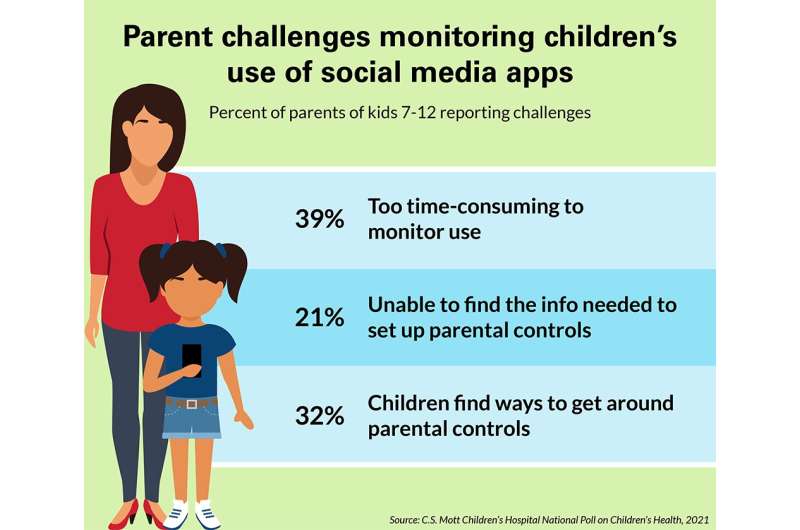
Now as we explained before, due to their developing brains resisting the social media urge is even harder for children and teenagers. Adults could be expected to take care of themselves and exert self-control, but it is unreasonable to expect this of the younger generation. Definitely because children are much more prone to the negative effects of social media on their mental health and development, action needs to be taken. Due to these facts, most would argue that parents are ultimately responsible for the actions of their children – offline and online. However, parents are often too uninformed or too stressed themselves to adequately stop their children from using the internet or educate them about proper use. This is even without considering that some parents might struggle with technology addiction or something similar themselves. The core problem lies in the way technology companies employ AI algorithms to keep us hooked. One of the best methods – and perhaps the most studied – is mindfulness meditation.
Education for moderate social media use is needed
“The man who makes everything that leads to happiness depends upon himself,
Plato
and not upon other men, has adopted the very best plan for living happily.
This is the man of moderation, the man of manly character and of wisdom.”
Because of the negative developments that have arisen from social media use in teenagers, we advocate for better education about social media mindfulness both for parents and teenagers. Additionally, we advocate for laws and regulation to prevent technology companies from exploiting children’s attention with their AI algorithms. Right now, the age restriction for most popular social media platforms is 13 years old, but as we have shown in this essay: this is not enough. More enforcement in this regard is needed. Additionally, their AI algorithms should be regulated at least for people under the age of 18, and steps are already being taken in order to make this happen. To try and prevent the addictive-technology epidemic, some app developers are trying to create apps that help curb the risk of addiction. Sadly, those apps may end up being just as addictive as the platforms they’re trying to help their users avoid. Clearly, you can’t fight fire with fire.
Our main focus is to advocate educating parents and children on social media mindfulness. Mindfulness meditation is the practice of increasing your awareness by paying attention to the present moment without judgment. Not unlike social media, it has experienced a boom in research interest in recent years; but unlike social media, this boom could have tremendous positive effects on children and society as a whole. It has been found to lead to increased concentration and attention capacities, exactly what is needed to combat the mindless attention-sucking pull from social media and their AI algorithms. Rather than habitually reaching for your phone to check Instagram, for example, you scan your environment and see what is causing this action.
Strong evidence supporting mindfulness based therapy as a method for increasing mental health comes from many sides. Some researchers suggest that participating in a mindfulness training program can lead to structural changes in the brain. The changes happen in structures that are associated with emotional regulation, self-awareness, arousal, attention, and memory. Do these features sound familiar? They should because they are the ones primarily associated with being deficient and underdeveloped in children and teenagers! Parents can be educated when learning how to raise their children, and they themselves can also benefit from it. In school systems, mindfulness in general should be implemented to better help children in this world of information overload. Social media use should be educated like a healthy diet: what to consume and what not, and moderation is key. It can be eduIt will help their development and well-being for life.
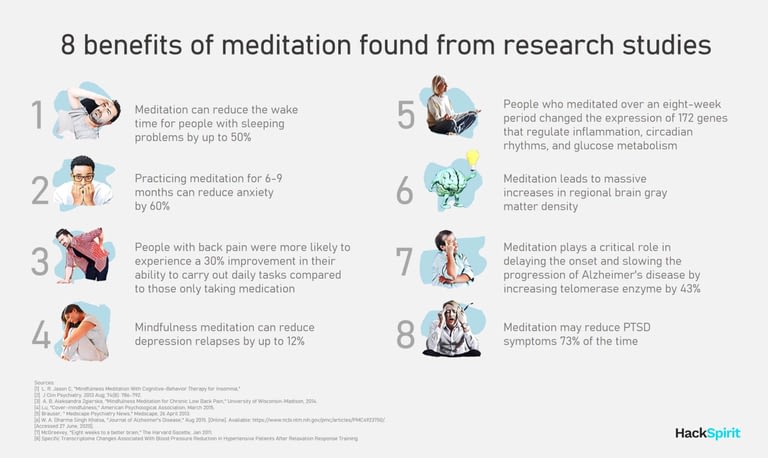
Mindfulness therapy has been found to combat almost all negative effects from excess social media use: it reduces the risk of depression and anxiety, it is able to facilitate academic success, and was found to even reduce the risk of suicide when combined with cognitive behavioral therapy. Researchers argue that it can be implemented as early as pre-school, giving children aged only 2-4 years old the ability to cope with early-life stressors. By teaching children mindfulness from a young age, and considering the structural brain changes that result from it, it may very well be the best antidote we have for eradicating the mental-health epidemic, facilitated by greedy tech companies. By increasing the children’s ability to pay attention, improving their regulation of emotions, and instilling a sense of peace & quiet into their young & malleable minds, we allow them to live in harmony with a world that is as stressful & demanding as it has ever been. Earlier in this essay we have shown that the relation between social media use and mental wellbeing has an inverted U-shape. Social media mindfulness can help everyone find the sweet spot with regard to social media use: as a tool to connect in the real world. Moderation is key.
Conclusion
The children of the world are suffering from predatory AI practices and if we don’t do something now, it may soon be too late. We have shown that social media platforms use artificial intelligence algorithms to recommend highly engaging content, and that this leads to risks of addiction and mental health issues. Because the brain systems related to self-control are far from being fully developed in children, they are far more likely to be affected by the predatory practices employed by tech companies. The negligence displayed by social media companies about the mental health issues that arise in their user base is nothing but appalling. Teenage girls suffer from distorted body image issues, and adolescents overall are getting more lonely, depressed, and anxious.
We hope that with regulation and by implementing mindfulness practices in the school system, we will change the 58% of global population using social media, into 58% of global population using mindfulness apps. Mindfulness social media use will make sure the negative effects of social media are minimized. Ultimately, this will lead to a world not dictated by who can attract the most attention, but by self-control, harmony, and a more sustainable future for everyone.
